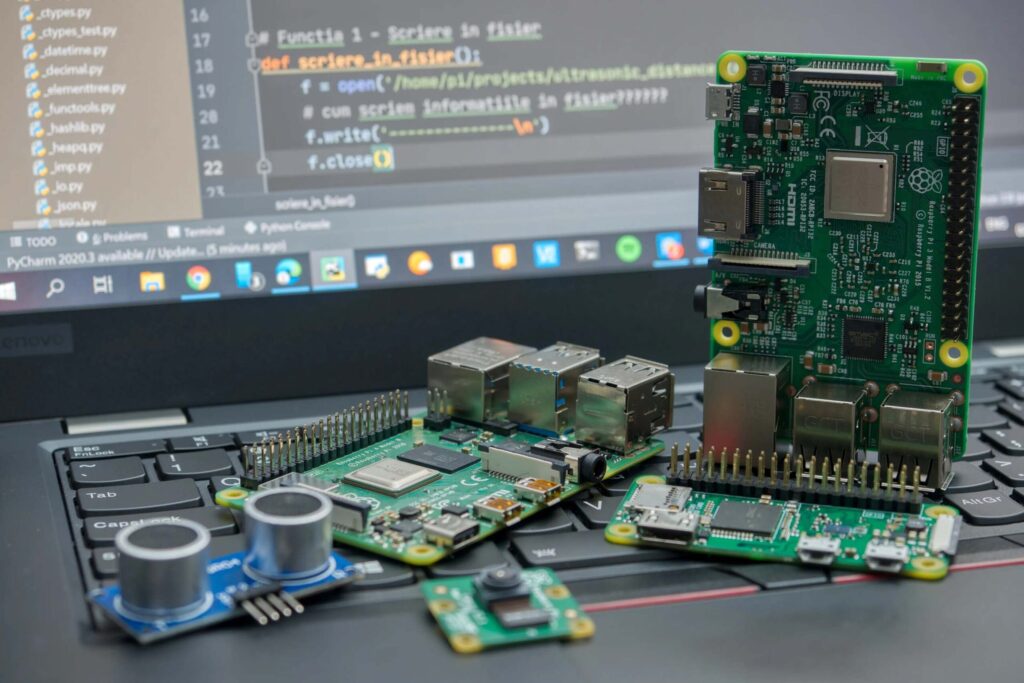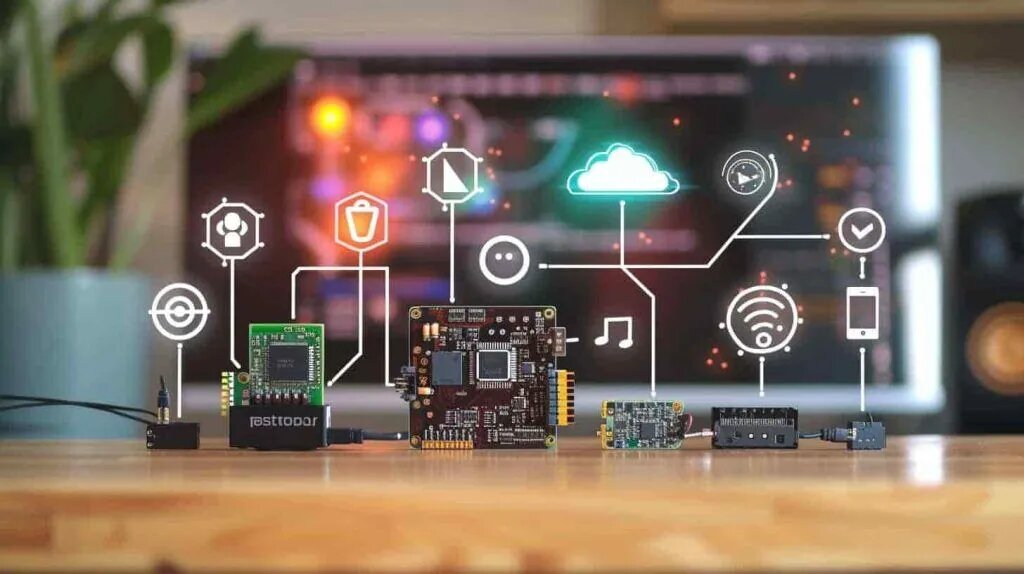The Raspberry Pi 5 is a powerful, versatile device that offers an impressive range of possibilities for both hobbyists and professionals. Whether you’re using it for development, creating a media center, or setting it up as a home server, the software apps you choose can make a huge difference in how well your Raspberry Pi performs.
The Raspberry Pi 5 supports various software apps, including Raspberry Pi OS, Kodi for media, OctoPrint for 3D printing, Home Assistant for automation, RetroPie for gaming, and Pi-hole for ad-blocking. These apps enhance its versatility for projects and entertainment.
In this article, we will explore the best software apps for Raspberry Pi 5, providing recommendations across various categories to enhance your experience.
Why Software Apps for Raspberry Pi 5 Are Important?
The Raspberry Pi 5 is a vast improvement over its predecessors in terms of processing power, graphics capabilities, and overall usability. However, just like any computer, its performance largely depends on the software you use.

The right apps can help you leverage the full potential of the Raspberry Pi 5, turning it into a mini desktop PC, a media server, or a development powerhouse. With so many applications available, choosing the best ones for your needs can be a daunting task, but we’re here to help.
Getting Started – Installing Software on Your Raspberry Pi 5!
Before diving into the software apps for Raspberry Pi 5, it’s important to understand how to install them. Most Raspberry Pi apps are available through the official Raspberry Pi OS repository, and you can install them using simple commands via the terminal or the built-in app store.
To get started:
1. Update Your System:
Always make sure your Raspberry Pi 5 is running the latest version of the Raspberry Pi OS by running:
sql
Copy code
sudo apt update && sudo apt upgrade
2. Install Apps via APT:
The simplest method to install software is by using the apt command:
css
Copy code
sudo apt install [app_name]
- Use the Pi Store: You can also explore the Pi Store for a variety of software apps.
Now that you’re ready to start installing apps, let’s explore some of the best options.
Read: Oneplus Open Accessories – Everything You Need To Know!
Best Software Apps for Raspberry Pi 5!
1. LibreOffice: A Powerful Office Suite:
If you plan on using your Raspberry Pi 5 as a desktop computer, you’ll need a robust office suite. LibreOffice is a free and open-source alternative to Microsoft Office that works well on the Raspberry Pi 5. It offers a full suite of applications, including Writer (word processor), Calc (spreadsheet), Impress (presentation), and more.
2. VLC Media Player: The Ultimate Media Center:
For anyone who wants to use their Raspberry Pi 5 as a media server or entertainment hub, VLC Media Player is a must-have. It supports a wide range of video and audio formats, including high-definition content, and works seamlessly with the Raspberry Pi 5 hardware.
3. Visual Studio Code: Ideal for Development:
For developers, Visual Studio Code is one of the best coding environments available. With support for various programming languages, extensions, and debugging tools, VS Code is perfect for anyone looking to build software or work on coding projects on the Raspberry Pi 5.
4. Thunderbird: Efficient Email Management:
If you prefer using a desktop email client, Thunderbird is an excellent choice for your Raspberry Pi 5. It supports multiple email accounts, offers a clean user interface, and integrates well with other software on the Pi, making it a solid choice for email management.
5. Brave Browser: Secure and Fast Web Browsing:
While Chromium and Firefox are popular browsers for Raspberry Pi, Brave offers additional privacy features, blocking ads and trackers by default. This makes it an excellent choice for anyone who values online security and speed on their Raspberry Pi 5.
6. Guake Terminal: A Drop-Down Terminal for Quick Access:
For developers and power users, Guake Terminal offers a unique feature—it’s a drop-down terminal that you can summon with a single keystroke. This is incredibly useful when you need quick terminal access without disrupting your workflow. It’s a must-have tool for any Raspberry Pi 5 user who frequently uses the command line.
7. Pi-hole: Block Ads Across Your Network:
Pi-hole is a network-wide ad blocker that works perfectly on the Raspberry Pi 5. Once set up, it filters out advertisements on all devices connected to your network, providing a faster and more enjoyable browsing experience. It’s an essential app for anyone who wants to streamline their network and block unwanted content.
8. CUPS: Manage Printers on Your Raspberry Pi 5:
If you’re using your Raspberry Pi 5 for office tasks, CUPS (Common Unix Printing System) is an invaluable tool. It allows you to manage your printers directly from the Raspberry Pi 5, supporting a wide range of devices and providing easy-to-use printing options.
9. Pidgin: Multi-Protocol Instant Messaging:
For those who need to stay connected, Pidgin is an excellent chat client for your Raspberry Pi 5. It supports multiple messaging platforms, including IRC, Facebook, and Skype, making it easy to stay in touch with friends, family, or colleagues, all from one app.
10. Synaptic: A Package Manager for Easy Software Installation:
Synaptic is a graphical package manager for Raspberry Pi that allows you to browse, install, and manage software apps with ease. If you’re not comfortable using the terminal, Synaptic provides a user-friendly interface to find and install the software apps for Raspberry Pi 5 you need.
11. Terminator: Advanced Terminal Management:
For users who need more advanced terminal management, Terminator allows you to split your terminal into multiple panes. This is perfect for running multiple commands or monitoring different tasks simultaneously, making it a valuable tool for developers working on the Raspberry Pi 5.
12. FileZilla: File Transfer Made Easy:
If you frequently need to transfer files between your Raspberry Pi 5 and other computers or servers, FileZilla is an essential FTP client. It supports both FTP and SFTP, making it a versatile option for file management and transfers.
13. Deluge: Torrent Downloader:
Deluge is a lightweight torrent client that works well on the Raspberry Pi 5. It provides a simple and effective way to download files via torrents, which can be particularly useful for downloading large software packages or media files.
14. MyPaint: A Digital Painting App:
For creative users, MyPaint is an excellent painting application that works smoothly on the Raspberry Pi 5. It offers a wide range of brushes and tools, making it perfect for digital artists looking to create on their Pi.
15. Nextcloud: Private Cloud Storage:
Nextcloud turns your Raspberry Pi 5 into a private cloud server, allowing you to store and share files securely across devices. With its robust security features, Nextcloud is an excellent way to manage your data while ensuring it remains private and under your control.
16. OpenVPN: Secure Your Internet Connection:
If you’re concerned about privacy and security, OpenVPN is a must-have for your Raspberry Pi 5. This open-source VPN client allows you to securely connect to the internet, protecting your data from prying eyes.
17. XBMC/Kodi: Turn Your Pi into a Media Center:
For those who want to use their Raspberry Pi 5 as a media center, Kodi (formerly XBMC) is the go-to software. It supports a wide variety of media formats and offers numerous plugins for streaming, making it an excellent choice for creating a home theater setup.
18. RetroPie: Gaming on Your Raspberry Pi 5:
If you enjoy retro gaming, RetroPie is the software you need. It allows you to play games from consoles like the NES, SNES, and PlayStation right on your Raspberry Pi 5, providing a nostalgic gaming experience.
19. GIMP: Powerful Image Editing:
For anyone in need of a powerful image editing tool, GIMP is a fantastic open-source alternative to Photoshop. It works well on the Raspberry Pi 5 and offers a range of tools for photo manipulation and graphic design.
20. Wine: Run Windows Applications on Your Raspberry Pi 5:
Wine allows you to run Windows applications on your Raspberry Pi 5, opening up a whole new world of software compatibility. While not all apps will run perfectly, Wine is still a great tool for users who need to run legacy Windows software on their Pi.
Exploring More Software Apps for Raspberry Pi 5!
In addition to the popular apps mentioned earlier, there are several other software tools that can greatly enhance your Raspberry Pi 5 experience. For instance, Docker is an excellent app for users who want to manage containers and isolate applications for better performance and security. For developers that want to optimize their workflows, it’s ideal.

Another essential tool is Kdenlive, a video editing software that provides powerful editing capabilities, making it ideal for creators working with media content. For those interested in home automation, Home Assistant is an open-source platform that integrates with numerous devices, giving you control over smart home gadgets directly from your Raspberry Pi 5.
Additionally, Raspberry Pi Imager makes it easy to write operating systems to SD cards, helping users set up a Raspberry Pi 5 quickly. By exploring these apps and others, you can tailor your Raspberry Pi 5 to fit a wide range of personal or professional projects, enhancing its versatility even further.
Read: Google Pixel Watch Battery Life – An Ultimate Guide!
FAQ’s:
1. What operating systems can I run on the Raspberry Pi 5?
The Raspberry Pi 5 supports a variety of operating systems, including Raspberry Pi OS, Ubuntu, and LibreELEC for media center setups. You can also run specialized OS versions like Kali Linux for security-focused tasks.
2. Can I connect a monitor to Raspberry Pi 5?
Yes, the Raspberry Pi 5 has dual micro HDMI ports that support up to two 4K displays, allowing you to connect monitors for a multi-screen setup.
3. How much RAM does the Raspberry Pi 5 have?
The Raspberry Pi 5 offers multiple RAM options, including 4GB, 8GB, and 16GB configurations, providing flexibility for various projects, from basic tasks to memory-intensive applications.
4. Can I use Raspberry Pi 5 for gaming?
Yes, the Raspberry Pi 5 is capable of running retro gaming emulators and some light gaming titles. For more advanced gaming, it supports certain Linux-based games and streaming platforms like Steam.
5. Is it easy to set up the Raspberry Pi 5?
Setting up the Raspberry Pi 5 is straightforward. You simply need to install an OS using the Raspberry Pi Imager, plug in peripherals like a keyboard, mouse, and monitor, and you’re ready to start exploring.
Conclusion:
With the power of the Raspberry Pi 5, the possibilities are virtually endless. The software apps for Raspberry Pi 5 we’ve discussed in this article will help you make the most of your device, whether you’re using it for productivity, entertainment, development, or even gaming. By carefully selecting and installing the right apps, you can transform your Raspberry Pi 5 into a highly functional and enjoyable machine.
Remember, always ensure your system is up-to-date, and don’t be afraid to experiment with different applications. As the Raspberry Pi 5 continues to evolve, new software will be released, making it an even more powerful tool for creators, developers, and tech enthusiasts.


